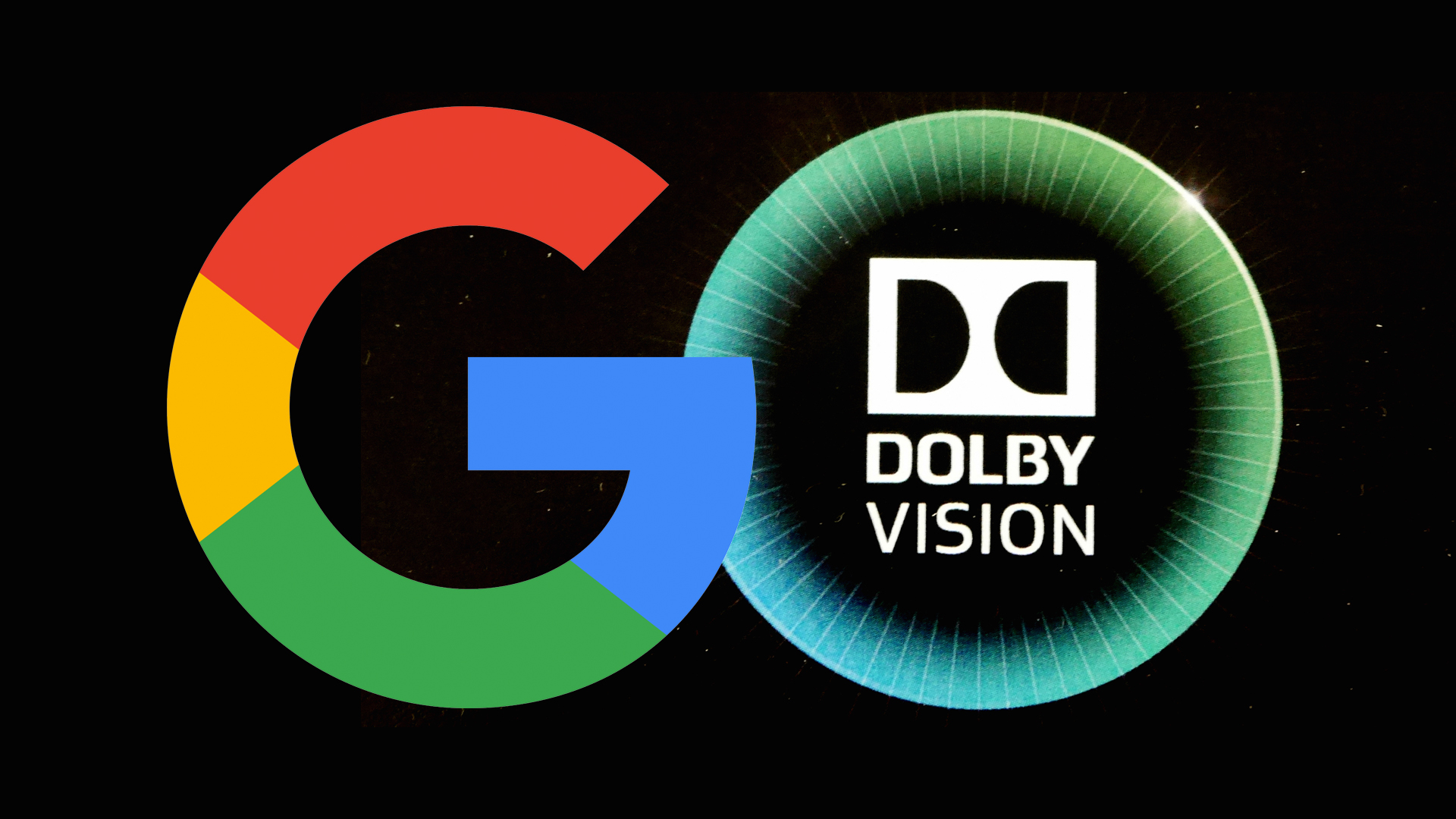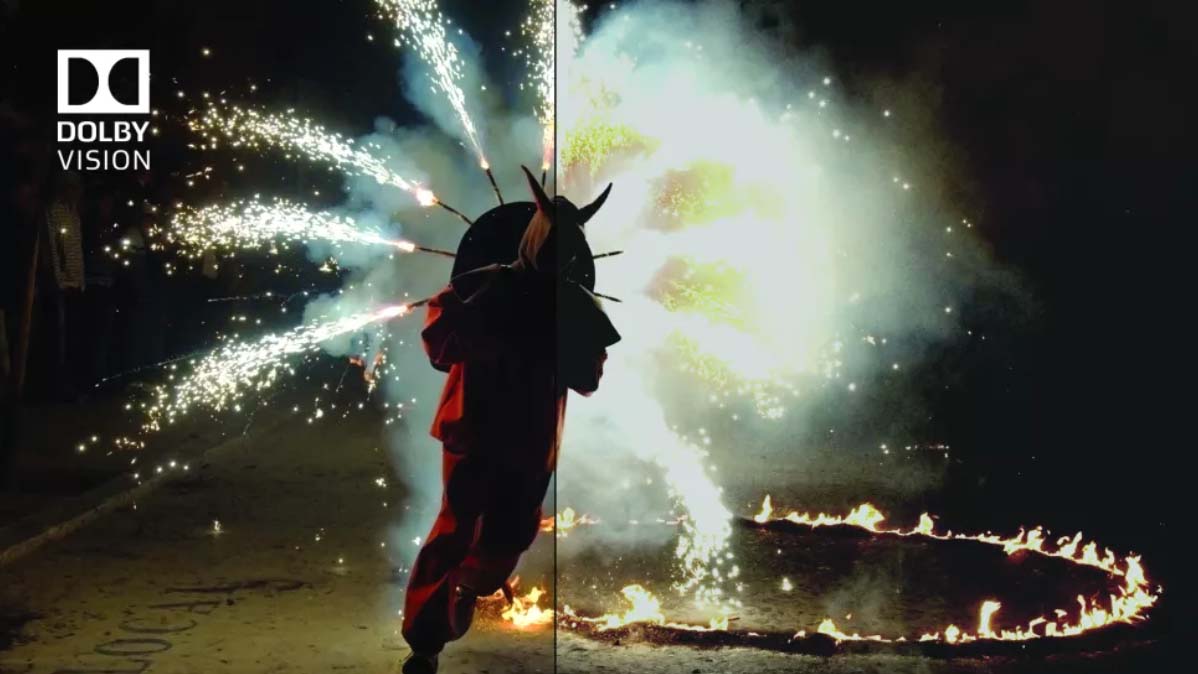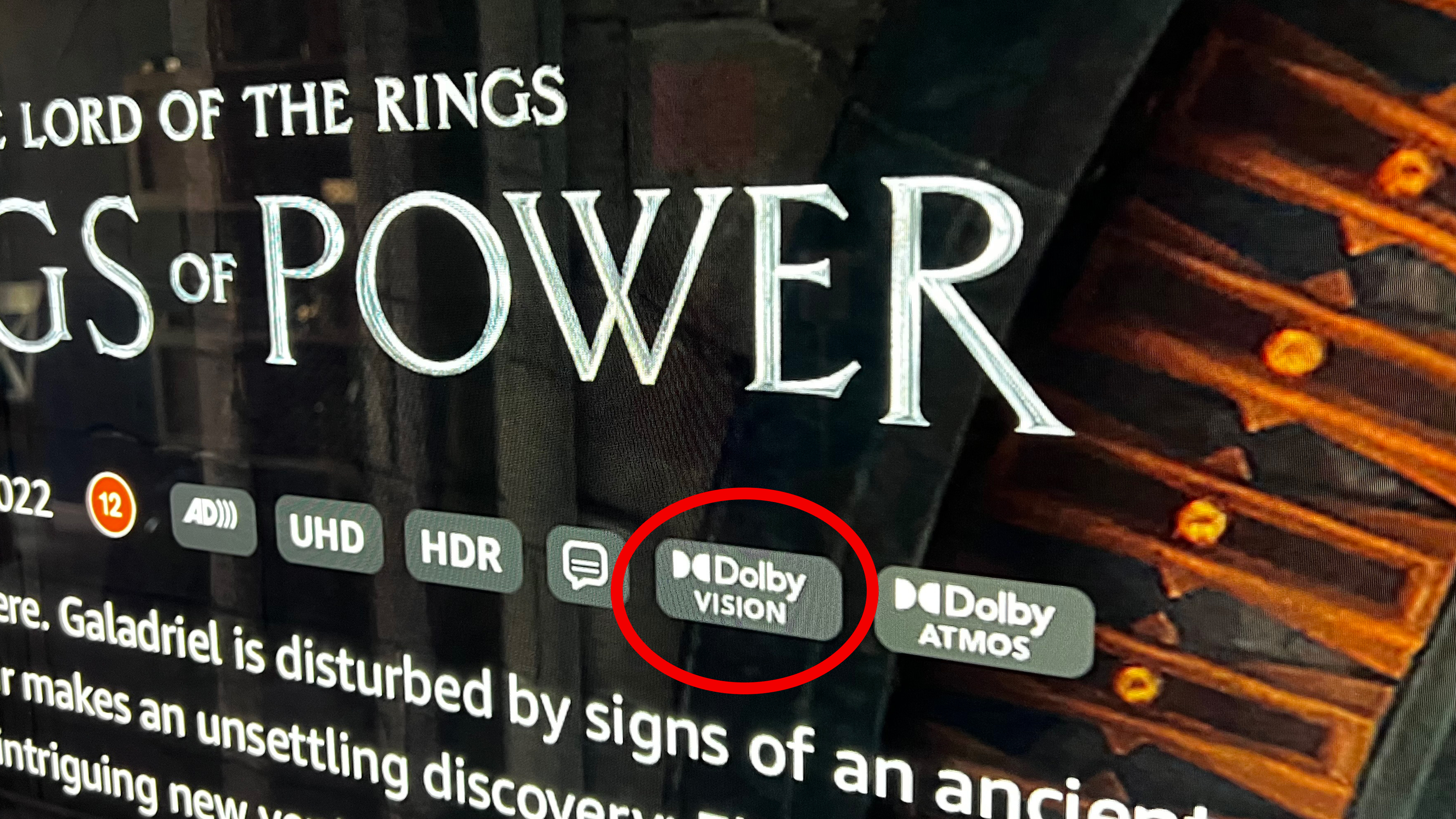Google wants to kill off Dolby Atmos and Vision with free versions instead
An alternative 3D audio and HDR option might boost Android and YouTube's options, but do we need it on TVs?

Google is planning to launch its own-brand equivalent to Dolby Vision HDR and Dolby Atmos 3D audio and is trying to persuade manufacturers to support it, according to a report in Protocol (via FlatpanelsHD). Protocol says that it has seen a video of Google's presentation to hardware makers, and that the plan is known as Project Caviar.
Dolby Vision is an advanced HDR format used in the majority of the best 4K TVs, while Dolby Atmos is supported in most of the best soundbars, and is a huge selling point right now.
The big push that Google is making to manufacturers is that the two new formats would be royalty-free, meaning that manufacturers wouldn't have to pay Google any fees in order to include support for them. As FlatpanelsHD points out, Dolby Vision costs up to $3 per device to include, and the cost of Dolby Atmos is unconfirmed.
AV aficionados will note here that there is already a royalty-free alternative to Dolby Vision: HDR10+. We'll come back to that – I suspect that it's relevant for Google's final plan here.
It sounds like YouTube is the main focus for Google – the streaming site currently supports basic HDR (known as HDR10), but not the more advanced Dolby Vision version or HDR10+. And it doesn't support any 3D audio standards (the two currently in use generally are Dolby Atmos and DTS:X, but Atmos is by far the best-supported option).
But the new formats would also be a boost to Android phones. iPhones include support for Dolby Vision and Atmos, but you mostly don't get this on Android – Samsung supports HDR10+ and Dolby Atmos, but that's just about it. Google is surely hoping that it can persuade Netflix, Disney and the rest to supports its new formats, so you can get the same quality of HDR and audio on all Android devices when streaming that you get on iPhone.

Analysis: Do we really need more HDR and audio formats?
The world of video and audio tech is already confusing enough, and full of inscrutable naming conventions. The last thing we need is more of those… but it sounds like Google's whole plan is to avoid that, which is smart for two reasons.
Get daily insight, inspiration and deals in your inbox
Sign up for breaking news, reviews, opinion, top tech deals, and more.
Let's start with the technical side. According to Protocol, Google says that the plan is to "make use of existing codecs" for its new formats (a 'codec' is name for the technology that encodes and compresses video or audio into the files that we use). If I had to guess, I'd say that Google's new HDR format will use the AV1 video codec and HDR10+ support, both of which are free for manufacturers to use.
The audio side is harder to predict, but there is already a royalty-free 3D audio tech. It's called Multi Dimensional Audio, and it's used as the basis for the DTS:X rival to Dolby Atmos. My guess is that Google will implement this technology in an existing audio file type.
The advantage of both of these approaches is that they may require minimal technical changes from TV/phone makers. The hardware needed for all of this is probably in most TVs sold today, so it might only require a software update to support the way Google will combine existing technologies into a 'new' format. Assuming this is how it works, it should massively increase the chances of it being supported on TVs in particular.
The second thing that's smart is that Google's plan here is to collect all this tech under an "umbrella brand", and I presume the names will be as simple as Dolby Vision and Dolby Atmos. You probably won't hear any of the technical terms I mention above – they'll just be called something like "HDR Sight" and "HDR Sound" or something like that.
This again gives them a chance of actually being remembered – unlike the weird names of HDR10+ or DTS:X.
Opinion: It's a nice idea, but it might be too late
In principle, I'm all for Google's plan here. There's no good reason Dolby should have all the fun here, and the price of including both Dolby Vision and Dolby Atmos support in hardware is a notable chunk of the total price of something like a streaming stick, so having a chance for hardware makers to avoid those fees but still delivery high-quality audio is great.
However, Dolby has basically been left to cement the idea that its formats are the best way to watch, and that's going to be very hard to overturn. Dolby doesn't charge streaming services to support Dolby Vision or Atmos, which is why they're in use on Netflix, Apple TV Plus, Disney Plus, Paramount Plus, Blu-rays and more. Dolby has totally embedded its name as the thing you need if you want the best quality from movies and TV.
So purely on desirability and name recognition, Google is facing an uphill battle. How will it make its own format seem like anything other than the budget alternative to the good stuff? Even if Google's new formats are exactly as good as Dolby's, they'll still struggle to make people believe that they are – and Dolby will definitely step up its own game to ensure people feel that way.

And with that in mind, Google has to persuade streaming services to support it. On YouTube, it's easy – Google already auto-creates different versions of videos on that site, all based on the original best-quality one you upload. But that's probably not how it's going to be for movie streaming sites – the studios and directors won't want versions auto-converted to a different HDR or audio format. They'll want movies remastered and checked. That would be a lot of effort.
Google is presumably hoping that the promise of support on the huge number of Android devices out there will persuade services to add support, but I'm not sure about that. If people buying phones didn't care about 3D audio before, how many will care just because a software update added?
And if Google can't get the services on board, why would hardware makers get on board? I mentioned that it might technologically easy to support Google's new features, but it would still take time, effort and money – and if it doesn't look like it'd boost sales, why not just save it and stick with Dolby Vision and Atmos only on the best TVs?
I hope Google can prove me wrong and add some more competition to this space – it might take some Vision, though.

Matt is TechRadar's Managing Editor for Entertainment, meaning he's in charge of persuading our team of writers and reviewers to watch the latest TV shows and movies on gorgeous TVs and listen to fantastic speakers and headphones. It's a tough task, as you can imagine. Matt has over a decade of experience in tech publishing, and previously ran the TV & audio coverage for our colleagues at T3.com, and before that he edited T3 magazine. During his career, he's also contributed to places as varied as Creative Bloq, PC Gamer, PetsRadar, MacLife, and Edge. TV and movie nerdism is his speciality, and he goes to the cinema three times a week. He's always happy to explain the virtues of Dolby Vision over a drink, but he might need to use props, like he's explaining the offside rule.